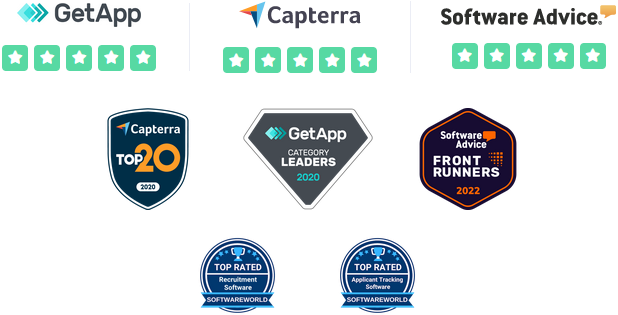Hiring at it's very best.
Recruit new employees like an absolute pro.
If you’ve read our glossary on Recruitment CRM’s, then you will know that a CRM system and an Applicant Tracking System are two sides of the same coin. When it comes to increasing efficiency, organisation, and the goal setting of your recruitment drive, an Applicant Tracking System is exactly what you’ll need for your business to succeed. But what exactly is anApplicant Tracking System and what can it do for you? Keep reading to find out.
An Applicant Tracking System (ATS) is a software tool for companies to track, manage, and store candidate information through the hiring campaign.
If you read our entry on Recruitment CRM’s then it’s worth bearing in mind that an Applicant Tracking System is its close companion – but the primary focus and initial function are its search capability.
When a potential candidate applies for a job online, their CV isn’t typically going be sent directly to a recruiter, a hiring manager or an HR manager. First, it is processed by an Applicant Tracking System. The optimisation of the Applicant Tracking System’s algorithms determines whether the recruiter even sees the CV, but we’ll get into that later.
Essentially, the role of an Applicant Tracking System is to ensure that the recruitment or hiring manager has as few headaches as humanly possible. An Applicant Tracking System will rank applicants based on previous job positions, skills or by using filters such as location or level of education. This works in a similar way to a search engine which will use keywords to locate the best website online that the user is looking for.
Applicant Tracking Systems are designed to mimic the human process only with more efficiency. When an HR manager or recruiter is sent through a large stack of CV’s by email, they almost certainly won’t have the time to search through them all manually. Instead, they can use the keyword and filter functions of the Applicant Tracking System to speed up the process in an automated manner, whilst simultaneously removing any oversights and the human error component of the process.
Applicant Tracking Systems differ slightly in their ability and functional aptitude. One system might focus on the best possible keyword search capability, while another excels in CV arrangement. Of course, there are systems out there that can easily perform all these functions, along with many others. If you’re looking for a system like that, GoHire has you covered.
Keywords are a fundamental tool that ensures an Applicant Tracking System works seamlessly. Using keywords in an ATS can help match up different CV’s with different positions, increasing the frequency of interviews. Those who are hiring can also make notes or leave star-ratings about each candidate, giving the ATS an amazon-esque rating metric. This creates instant simplicity for the system to show a grade for the candidate you saw fit.
When a candidate applies for a position through an Applicant Tracking System, they will most likely be asked to answer a series of ‘knockout questions’, depending on the system used. What are knockout questions, I hear you ask? These are candidate aptitude questions that can be formulated in a style of tick boxes or simple short answers. They are put in place to narrow the pool of applicants appropriately, to coincide with the specifications of the job role. If any of these questions are answered poorly, they will be automatically flagged by the Applicant Tracking System and the user of the system can take the necessary action. Good answers will result in that CV being moved on to the next stages.
The optimising of these knockout questions, as well as the keywords and filters, are essential to ensuring that your best candidates don’t slip through the radar. These are to aid you, the HR manager or a recruiter, in the unenviable task of finding the best and the brightest candidate for your latest role.
Another thing to bear in mind is some Applicant Tracking Systems will rank candidates higher if a keyword is mentioned more than once. For instance, if a computer programmer CV lists ‘Java’ two or three times throughout, this will rank that CV higher on the list than one that only mentions it once, thus those with more experience will be given more consideration.

Learn more about what an ATS is, how it can help you, and the different ways it will streamline how you recruit.
Start reading
Find out more about what RecOps means and how it can help you develop your recruitment strategy.
Start reading
Wondering what is a Recruitment CRM? Discover everything you need to know and how you can use it.
Start reading
An essential part of the initial hiring process is recruitment marketing, learn more about it here.
Start reading